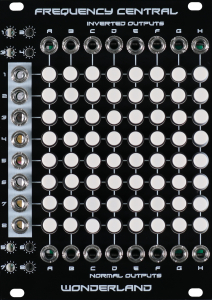Description
Infinitely Maybe is a full featured randomness module, with a number of sources of randomness:
- White noise
- Pink noise
- Sample and hold circuit
- Random gates circuit
An onboard CV mixer allows you to mix two different sources into the sample and hold circuit. White noise is normalised to CV input 1, Pink noise is normalised to CV input 2
Infinitely Maybe has an onboard clock for triggering the sample and hold circuit. This may be overridden with an external clock if required via the clock in socket.
There is a built in LAG circuit, which enables the S/H OUT to slide between voltages at a predetermined rate. This function can be remotely controlled via the LAG IN
Finally, a random gates output is derived from the S/H Out. With the MAYBE knob at 0 a constant gate is available. The further you turn the MAYBE knob towards 10, the less likelihood of a gate is.
In the above video, the Kraftwerkian noise/drum thing is achieved by patching Infinitely Maybe’s white noise into Continuum for some far out phasing. Continuum is being swept by Klang Stadt’s LFO. The output of Continuum is patched into a More VCAs, which is controlled by CEMvelope. Here’s where the magic happens. CEMvelope is being triggered by Infinitely Maybe’s random gates output (known as Maybe). The donor source with is being sampled by Infinitely Maybe’s sample and hold is Klang Stadt’s Sub 2 output. Also, there’s a bit of slew applied to the sample and hold using Infinitely Maybe’s Lag. All of this results in some random long and short noise hits which are dependent on the decay/release times of CEMvelope as well as what voltages Infinitely Maybe samples from Klang Stadt’s Sub 2 output. Got it? Yeah quite straightforward.


